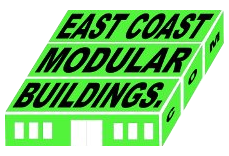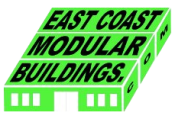The Rise and Evolution of Prefabricated Commercial Retail Buildings

Prefab Commercial Retail Buildings
Call Today!
352-557-4975
In an ever-evolving world of architecture and construction, the concept of prefabricated buildings has emerged as a revolutionary solution, particularly in the commercial retail sector. Prefabricated structures, also known as prefab buildings, offer numerous advantages in terms of cost-effectiveness, efficiency, and sustainability, making them an increasingly popular choice for retailers aiming to establish a physical presence swiftly and efficiently. This article delves into the realm of prefab commercial retail buildings, exploring their evolution, benefits, challenges, and future prospects in the retail industry.

Prefabricated construction involves assembling building components off-site in a controlled factory environment and then transporting them to the desired location for final assembly. This method significantly reduces construction time, minimizes waste, and often results in cost savings compared to traditional on-site construction methods.
In the realm of commercial retail spaces, the demand for rapid establishment combined with cost-efficiency has spurred the adoption of prefab structures. From pop-up stores and kiosks to full-fledged retail outlets, prefab buildings offer a versatile solution catering to diverse retail needs.
Advantages of Prefabricated Retail Buildings
Speedy Construction: One of the primary advantages of prefab retail buildings is the rapid construction timeline. With components manufactured off-site, projects can be completed in significantly shorter timeframes compared to conventional construction. This speed is particularly advantageous for retailers aiming to capitalize on specific market trends or seasonal demands swiftly.
Cost-Efficiency: Prefabrication often results in cost savings due to reduced labor costs, streamlined construction processes, and minimized material waste. Additionally, the controlled factory environment allows for efficient resource utilization, contributing to overall cost-effectiveness.
Sustainability: Prefabricated construction can align with sustainable building practices. The controlled manufacturing environment enables better management of resources, waste reduction, and the incorporation of eco-friendly materials, contributing to a smaller environmental footprint compared to traditional construction methods.
Flexibility in Design: Contrary to common misconceptions, prefab buildings offer a wide range of design possibilities. Modern advancements in technology and manufacturing techniques allow for customizable designs, catering to various architectural styles and retail requirements while maintaining structural integrity.
Challenges and Considerations
Despite their numerous advantages, prefab retail buildings also face challenges that warrant consideration.
Design Limitations: While prefabricated structures offer design flexibility, certain limitations may exist due to standardized components and manufacturing processes. Achieving highly intricate or unconventional designs might pose challenges in the prefab context.
Transportation and Site Access: Transportation of large prefab components to the site and ensuring suitable site access for assembly can sometimes present logistical challenges. Access to the location, including roads, clearances, and site preparation, needs to be carefully assessed to avoid delays or complications.
Perception and Quality Concerns: Historically, prefabricated structures were associated with lower quality. Overcoming this perception and ensuring high-quality standards are met is crucial for wider acceptance and trust in prefab retail buildings.

Evolution and Innovation
The evolution of prefab retail buildings has seen significant advancements in both design and technology. Innovations in materials, manufacturing techniques, and architectural concepts have propelled the industry forward.
Advanced Materials: The use of innovative and sustainable materials, such as recycled steel, engineered wood products, and energy-efficient components, has enhanced the durability, aesthetics, and environmental friendliness of prefab structures.
Technological Integration: Integration of smart technologies within prefab buildings has transformed them into sophisticated, interconnected spaces. These technologies include energy-efficient systems, IoT (Internet of Things) devices for monitoring and control, and advanced security measures, offering enhanced functionality to retail spaces.
Modular Construction: The rise of modular construction techniques allows for greater flexibility and scalability in prefab retail buildings. Modular components, easily assembled and disassembled, offer retailers the opportunity to adapt spaces according to evolving needs or relocate structures with ease.
The future of prefabricated commercial retail buildings appears promising, with continual advancements driving innovation and acceptance within the industry. As sustainability becomes a focal point for businesses across sectors, the eco-friendly aspects of prefab construction are likely to gain more attention and traction.
Moreover, the ongoing development of advanced manufacturing techniques, coupled with the integration of cutting-edge technologies, will further enhance the appeal and functionality of prefab retail spaces. As perceptions regarding quality and design continue to evolve, prefabricated buildings are poised to become an integral part of the retail landscape, offering agility, cost-efficiency, and sustainability to retailers worldwide.
